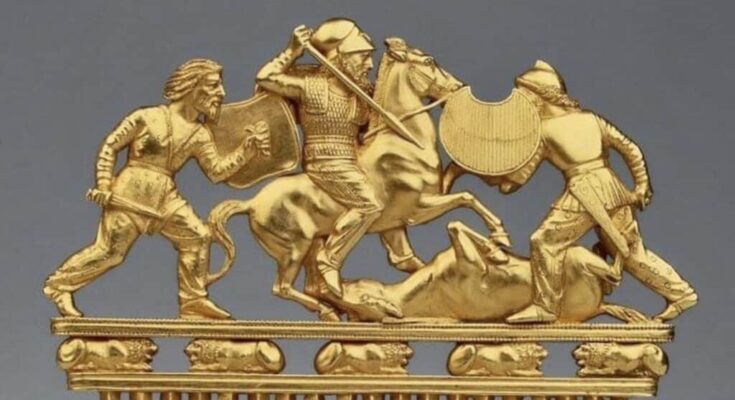
The Scythians were a group of nomads known for their beautiful gold art. One of their works is a gold sculpture showing a Scythian horseman riding a horse. This sculpture was found near the Black Sea in the area that is now Turkey.
The Scythians lived from around 800 to 300 BC. They moved from place to place across regions that are today known as southern Siberia, Central Asia, and the northern Black Sea. Although they came from different backgrounds, they shared many cultural traditions.
Greek historian Herodotus explained Scythians
There is little written about the Scythian warriors themselves, and much of what we know comes from outside sources. One such source is Herodotus, a Greek historian and geographer from the fifth century BC.
He described the Scythians as fierce and elusive, saying, “None who attacks them can escape, and none can catch them if they desire not to be found.”
Herodotus wrote about the Scythians and other nomadic groups in his account of the Persian Wars. He included details about their customs and way of life. Herodotus gathered some of this information firsthand during his travels to the Black Sea region, reaching places such as the city of Olbia and the Dneiper River, known to the Greeks as the Borysthenes.
However, much of what he learned likely came from the Black Sea Greeks, who traded with the Scythians. The Scythians provided goods such as fish, wheat, and even policemen to the Greeks. Some of the stories and information were likely passed along as hearsay, traveling alongside goods like silk that were traded from Eastern Asia.
Archaeological evidence between Greeks and Scythians
Archaeological evidence for studying the Scythians mainly comes from two key areas. One is the Black Sea region, where the Greeks set up settlements to trade with local tribes. Many artifacts from this region have been found in the graves of wealthy Scythian leaders and other tribal chiefs. These artifacts date back to the 7th to 4th centuries BC.
The second key area with important archaeological evidence is the Altai Mountains. Burials found in places such as Pazyryk and other sites in this region have provided unique artifacts that are often lost in most archaeological digs. Soon after these burials were made, they were robbed, similar to the rich graves in the Black Sea region. When thieves broke in, water seeped into the underground chambers covered by mounds of earth and stones.
In the cold mountain climate, this water froze and remained frozen due to the insulation from the mound. As a result, items made of wood, leather, felt, and even human remains from the 5th and 4th centuries BC were well-preserved when Russian archaeologists excavated them in the 1920s and 1940s.



